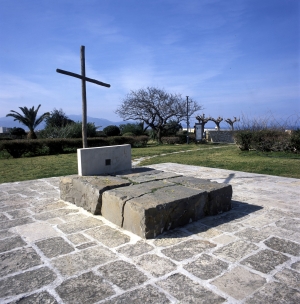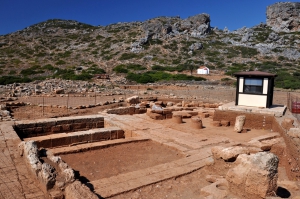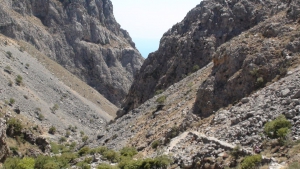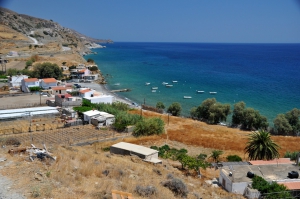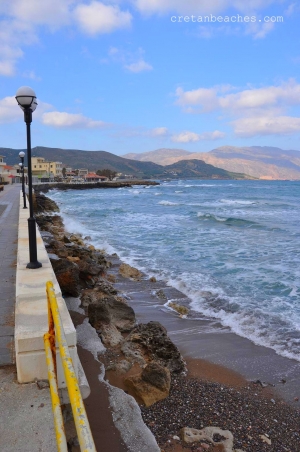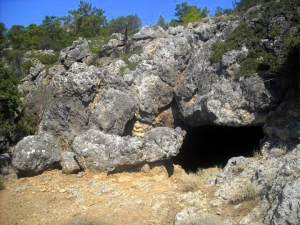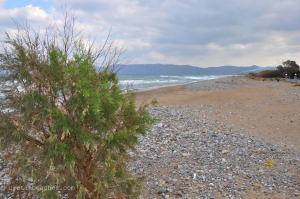The grave of the important Cretan writer Nikos Kazantzakis (1883-1957) is located at the highest point of the Walls of Heraklion, the Martinengo Bastion, with panoramic views to the ugly, but also historical, concrete jungle of Heraklion.
In front of the big tamarisk trees of the square Kitroplatia there is a small beach with sand and pebbles in places. Here you will find umbrellas and showers. Next to it there are many options for accommodation, food and drink. It is a perfect choice for children and anyone looking for a beautiful and clean beach, close to all amenities of a city.
The ancient town of Falasarna (or Phalasarna) is located at the west base of the peninsula Gramvousa and was one of the major towns of Crete during the Hellenistic Era. The city was famous for its port, the only natural harbor in western Crete, built in a small lagoon.
Kallikratis is a relatively small gorge in the southeast region of Lefka Ori (White Mountains) in Chania Prefecture. The gorge connects the mountainous pasture lands with the lowland villages. It is a very pleasant walk, offering great views and rare flowers, but is not very popular with tourists. The Kallikratis Gorge together with the Asfendou Gorge can be a full day’s excursion.
It is located at the exit of a small valley, a rare phenomenon in the wild Asterousia Mountains, which starts from the village Antiskari and ends in settlement. The fertile valley is used for growing early vegetables such as tomatoes, cucumbers, peppers, etc., since the temperature here is always high. Characteristic of the warm climate is that the swallows do not leave the area in winter.
The beach of Telonio (i..e Customs Office) starts east of the main pedestrian road of Kissamos and extends to the local stadium, about 1km eastern. Actually it is the westernmost part of the vast beach that starts from Kissamos and ends in Nopigia, several kilometers eastern.
The cave of the Cyclops Polyphemus is located between Sougia and Koustogerako settlements. The cave has no interesting decor, but one marble formation that reminds of a throne. The entrance is divided in two by a large rock, like the rock that was put by Odysseus in the cave of Polyphemus, the one-eyed cannibal Cyclops, before blinding him with a large wooden stick.











